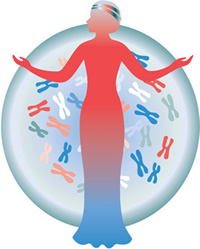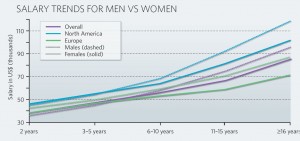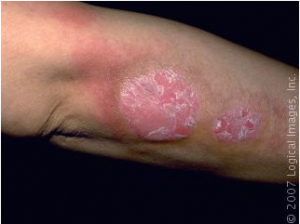 A new report by the Institute of Medicine issued on Sept. 23, concludes that there has been some progress in women's health over the past two decades especially in lessening the burden of disease and reduced deaths among women in the areas of cardiovascular disease, breast cancer and cervical cancer, specifically. The effort has yielded less but still significant progress in reducing the effects of depresssion, HIV/AIDS, and osteoporosis in women. However, the report also identifies several areas that are important to women that have seen little progress, namely, unintended pregnancy, autoimmune disease, alcohol and drug addiction, lung cancer, and dementia.
A new report by the Institute of Medicine issued on Sept. 23, concludes that there has been some progress in women's health over the past two decades especially in lessening the burden of disease and reduced deaths among women in the areas of cardiovascular disease, breast cancer and cervical cancer, specifically. The effort has yielded less but still significant progress in reducing the effects of depresssion, HIV/AIDS, and osteoporosis in women. However, the report also identifies several areas that are important to women that have seen little progress, namely, unintended pregnancy, autoimmune disease, alcohol and drug addiction, lung cancer, and dementia.
Overall, few gains have been made on chronic and debilitating conditions that cause significant suffering but have lower death rates, pointing to the need for researchers to give quality of life similar consideration as mortality for research attention. The report also points out that barriers such as socio-economic and cultural influences still limit the potential reach and impact of research developments, especially among disadvantaged women.
Several observations made by the experts who wrote the report are in areas the Institute for Women's Health Research at Northwestern has raised as ongoing problems. One of those issues is the the fact that many research projects, even if they include both men and women, rarely report the results by sex. Furthermore, as pointed out in a recent paper in Nature, written by IWHR director, Teresa Woodruff, PhD, and her graduate students, scientific journals should require authors to include sex data in their publications.
Another challenge discussed in the report is how best to communicate complex research findings to the public and the media. The IWHR through it blog, website and monthly e-newsletters is striving to meet that challenge.
Over the next month or so, this blog will discuss issues in the IOM report in greater detail but in the meantime click HERE to read the press release, the entire report on line or to order a copy.

 An understanding why women experience more stress-related mental disorders like depression and Post Traumatic Stress Disorder (PTSD) has eluded scientists but a new study in rat brains may help explain why women are more prone to mood and anxiety disorders than men.
An understanding why women experience more stress-related mental disorders like depression and Post Traumatic Stress Disorder (PTSD) has eluded scientists but a new study in rat brains may help explain why women are more prone to mood and anxiety disorders than men. The National Institutes of Health Office of Research on Women's Health (ORWH) will celebrate its 20th anniversary with a day-long symposium on Monday, Sept. 27, in Bethesda, Maryland. Discussed will be highlights of early accomplishments in women's health research, as well as a preview of the next decade A Vision for the Year 2020. Many of the advances involve medical differences between women and men, and implications for sex/gender — appropriate clinical care and personalized medicine.
The National Institutes of Health Office of Research on Women's Health (ORWH) will celebrate its 20th anniversary with a day-long symposium on Monday, Sept. 27, in Bethesda, Maryland. Discussed will be highlights of early accomplishments in women's health research, as well as a preview of the next decade A Vision for the Year 2020. Many of the advances involve medical differences between women and men, and implications for sex/gender — appropriate clinical care and personalized medicine.
